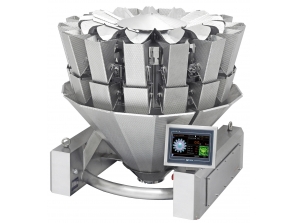
The T-account guides accountants on what to enter in a ledger to get an adjusting balance so that revenues equal expenses. The main reason T accounts are used is so accountants can see the different debits and credits that go into an account and make up the balance. The visual representation can be easier for beginners than just putting them straight in a line. The t-account is often used as a useful tool for accountants and students in analyzing company accounts or in solving accounting problems. To be effective, one must know the concepts behind and how to use debits and credits.
A T-account is used in bookkeeping, which involves keeping track of the financial transactions that occur within a business. The name is based on the way that a T-account appears, with two columns and one line. This is posted to the Cash T-account on the debit side beneath the January 17 transaction.
T-Account Debits and Credits
A number of T accounts are typically clustered together to show all of the accounts affected by an accounting transaction. T-accounts can also impact balance sheet accounts such as assets as well as income statement accounts such as expenses. With that being said, the five most common types of accounts in financial accounting are assets, liabilities, expenses, revenue, and owner’s equity. A double entry system is considered complex and is employed by accountants or CPAs (Certified Public Accountants). The information they enter needs to be recorded in an easy to understand way. This is why a T account structure is used, to clearly mark the separation between “debits” and “credits”.
However, after the death of the account owner, beneficiaries of a Roth IRA are subject to the RMD rules. Okay, for the first transaction, there will need to be a credit to the Cash T account for $300 and a debit to an equipment T account for $300. A “T” account is a basic way to account for transactions within an account. Below is a break down of subject weightings in the FMVA® financial analyst program. As you can see there is a heavy focus on financial modeling, finance, Excel, business valuation, budgeting/forecasting, PowerPoint presentations, accounting and business strategy.
Journal Entries
For day-to-day accounting transactions, T accounts are not used. Instead, the accountant creates journal entries in accounting software. Thus, T accounts are only a teaching and account visualization aid. The bottom set of T accounts in the example show that, a few days later, the company pays the rent invoice.
- The T account concept is especially useful when compiling more difficult accounting transactions, where the accountant needs to see how a business transaction impacts all parts of the financial statements.
- T accounts are clear, visual representations of a business transactions that take the form of a “T” – one side for debits, one for credits.
- Journaling the entry is the second step in the accounting cycle.
- If you’re ready to automate the entire accounting process for your small business, be sure to check out The Ascent’s accounting software reviews.
Recall that the general ledger is a record of each account and its balance. Reviewing journal entries individually can be tedious and time consuming. The general ledger is helpful in that a company can easily extract account and balance information. We now return to our company example of Printing Plus, Lynn Sanders’ printing service company. We will analyze and record each of the transactions for her business and discuss how this impacts the financial statements.
A General Ledger Example Understanding the GL in Accounting
In this article, we shall take the example of Sam, a landlord of Monkey Army, receiving a $20,000 invoice for June rent. The T account indicates that both a $10,000 debit to the rent expense account and a $10,000 credit to the accounts payable account will occur. T-accounts are also used for income statement accounts to represent revenues, t accounts gains, expenses, and losses on the income statement. It instructs accountants on entering entries into a ledger to achieve an adjusted balance, ensuring that revenues equal expenses. By recording the debit and credit halves of the transaction and then running a trial balance, the accountant can be sure that nothing has been missed.
The 8 Important Steps in the Accounting Cycle – businessnewsdaily.com – Business News Daily
The 8 Important Steps in the Accounting Cycle – businessnewsdaily.com.
Posted: Mon, 23 Oct 2023 07:00:00 GMT [source]
Since most accounts will be affected by multiple journal entries and transactions, there are usually several numbers in both the debit and credit columns. Account balances are always calculated at the bottom of each T-account. The total difference between the debit and credit columns will be displayed on the bottom of the corresponding side. In other words, an account with a credit balance will have a total on the bottom of the right side of the account.




